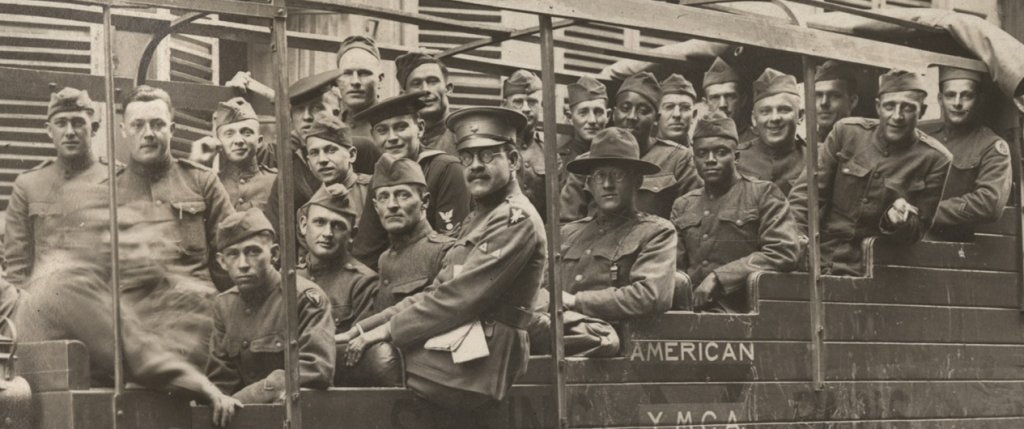

Alexander Curran is a young paramedic in the Tampa, Florida area. Growing up, he often heard about his twice great-granduncle, Sergeant John T. Curran, who fought in France in World War I. The peacetime carpenter from Philadelphia was drafted in 1917 and died in a German field hospital in Marville, France, in early November 1918 after being wounded by machine-gun fire in the closing days of the war. Unfortunately, his remains were never recovered, and Sgt. Curran of the 316th Infantry Regiment of the “all draft” 79th Division of the American Expeditionary Force was officially listed as one of the over 1,184 American servicemen Missing in Action from the Great War.
Despite the existence at the time of detailed German records from the military hospital, including an assigned grave number in the garden adjacent to the makeshift hospital, the U.S. military Grave Registration Service (GRS) apparently never went to the site. At the same time, the GRS was undertaking the massive task of consolidating the remains of the over 100,000 American War dead from temporary gravesites all over northeastern France and either sending them back to the U.S. or permanently interring them into six cemeteries being constructed near major battlefields. By 1934, all efforts to recover and identify unknown remains were halted, and the information about Alexander’s twice great-granduncle sank quietly into the GRS files.

Sometime around 2013, Alexander started hearing of activities associated with the World War I Centennial and wanted to try and learn more about his ancestor. “I got the book of the original 79th Division history,” he told WATM. “In the back, there was a Roll of Honor that listed Sgt John T. Curran as ‘Died of Wounds’. It hit me how he could be missing if it was known how he died?” This discovery put Alexander on a path that would eventually lead him to the Doughboy MIA Foundation and agonizingly close to where his family member may rest in France.
Robert Laplander is a Marine veteran and author of a definitive book on the American “Lost Battalion” of World War I. It was during research for the book that Laplander became aware of the possibility of identifying those missing, using modern DNA and electronic technology, such as ground-penetrating radar and drone terrain mapping. He also discovered that no effort existed, and the Department of Defense’s POW/MIA Accounting Agency is restricted to activities associated with World War II, the Korean and Vietnam Wars and recent conflicts. Fortunately, under the auspices of the privately funded World War I Centennial Commission which came together to mark the 100th anniversary of the end of the war in 2018 and finally construct the nation’s World War One Memorial in Washington D.C., Laplander was able to put together The Doughboy MIA Foundation.
Doughboy MIA consists of a core group of 18 individuals, including a medical doctor, several PhDs in fields such as archeology, geology, and topography, researchers, and other specialists. Each branch of the U.S. military has a department lead. Their research efforts so far identified high probability locations of three MIAs.

Corporal Edward J. Malone of New York died in early September 1918, and his comrades buried him with his mess tin containing identifying information. His gravesite was marked with a bayonet and identification tag, and the site coordinates carefully recorded. There were several unsuccessful attempts to find his grave immediately after the war. Cpl James L. Uber of Pennsylvania died in October 1918 and was hastily buried on the battlefield, but the grave was never located again. Nearly 100 years later, a young French boy found Corporal Uber’s dog tag in a field, and Doughboy MIA believes his body may lie in a 100 square yard area in that same field. The farm building where Sgt Curran died and the adjacent garden remains much as it was in 1918; the building last occupied in the 1950s.
Alexander Curran traveled to that location in France in the fall of 2021 with other DMIA team members. The initial visit was to introduce themselves to French authorities and establish their scientific creditability. In addition to the sanctity of the French battlefields, they can also be dangerous places, with long-buried unexploded artillery shells and grenades, some of them containing poison gas. Each year incidents occur, in what the French call a continuing “harvest of iron.”
As the COVID-19 pandemic fades, the organization is gearing up to continue in-person archive research and a follow-on trip to France, after using pandemic downtime to research and examine available online records. Hopes are high that underground anomalies will be identified in target areas that will warrant a proper, sanctioned MIA investigation. Until then, these men remain among the Doughboy MIAs.
For more information, see www.doughboymia.org
